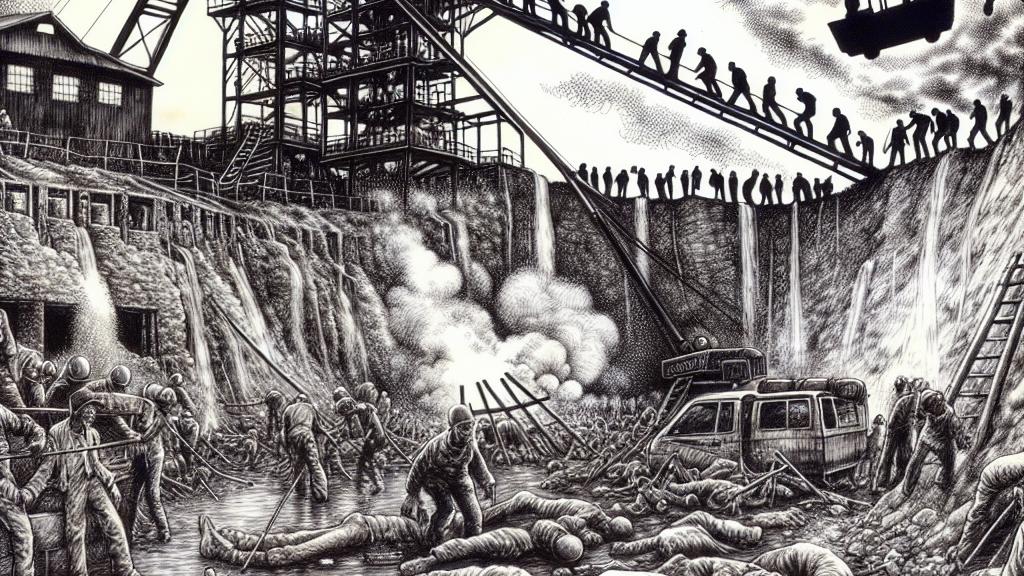Efforts to Identify Victims of Stilfontein Mine Collapse
Overview
- Rescue operations reveal harrowing realities at Stilfontein mine.
- Backlash mounts against authorities for their severe tactics against miners.
- Identifying deceased miners remains a daunting challenge amidst despair.

A Grim Rescue Operation
Deep in the heart of South Africa, the Stilfontein mine stands as a grim reminder of desperation and survival. Recent rescue operations have uncovered not just startling statistics—over 78 bodies recovered and hundreds of illegal miners, known locally as "zama zamas," brought back to the surface—but also profoundly disturbing realities. These men endured unimaginable conditions underground for months, often without food or water since November. Imagine the harrowing choices they faced: risking their lives in an abandoned gold mine, once a thriving industrial site, just to secure a means of survival. This situation underscores the broader economic crisis affecting many in the region, compelling them to turn to illicit mining as a last resort.
The Authorities' Controversial Tactics
In an effort to combat illegal mining, South African authorities have implemented a stringent siege around the Stilfontein mine, leading to widespread controversy and condemnation. By blocking access to food and water, officials believed they could force miners to emerge from the depths of despair. However, this brutal strategy has incited significant backlash from community members and human rights activists, many of whom have labeled the situation a massacre. Powerful videos taken underground juxtapose the heart-wrenching struggles of survivors with the lifeless bodies of those who didn’t make it. Such imagery compels us to question: is this truly a fight against crime, or an unjust punishment for those caught in dire circumstances?
Challenges in Identifying the Victims
Now, as efforts intensify to identify the deceased, we confront an overwhelming challenge. Most of the miners were undocumented migrants, and their families, often in distant countries, remain unaware that their loved ones were entangled in this tragedy. With only two bodies confirmed so far, the identification process is hindered by a complete lack of documentation and the painful reality of grief. Authorities are conducting DNA tests to unearth answers, but the emotional toll weighs heavily on the community. Consider the anguish of families waiting for news—each moment stretching into an agonizing eternity. The relentless human cost of this disaster demands our attention and highlights the urgent need for compassionate responses in crises of such magnitude.

Loading...